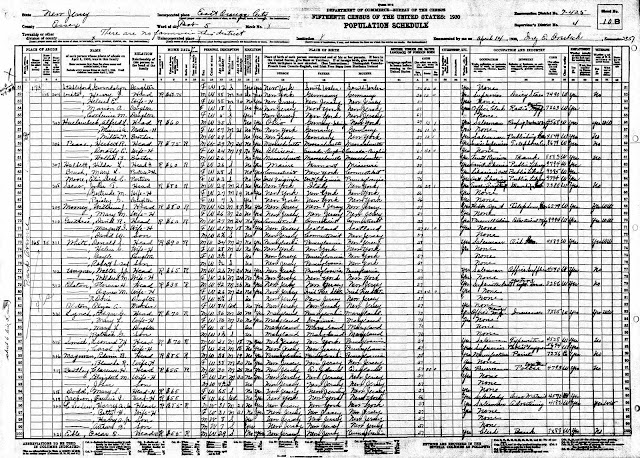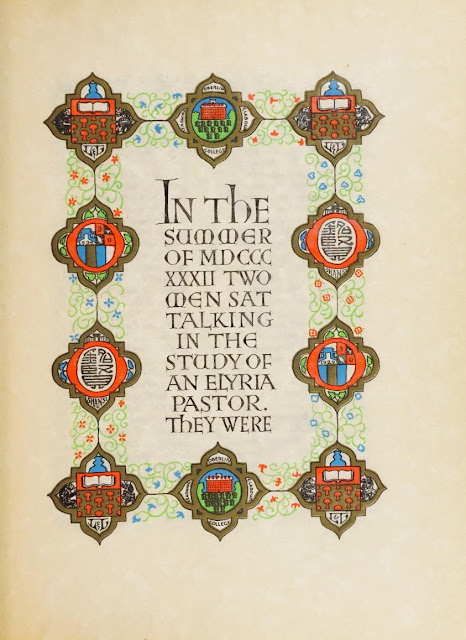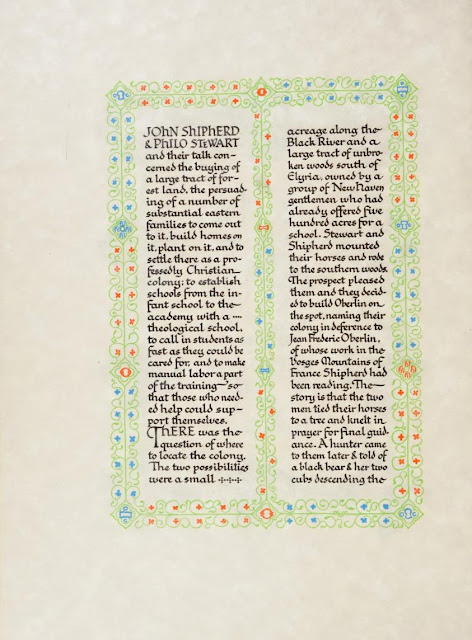1920
Harry “A” Chesler was born “Henry Chester” on January 10, 1898, in Jersey City, New Jersey according to a reissued birth certificate, dated July 20, 1914, from the Board of Health and Vital Statistics. Maybe the clerk in 1898 misheard the surname as Chester and the error was copied in 1914. The birth certificate was attached to Chesler’s 1920 seaman’s application.
Sometime after Chesler’s birth, his parents, Benjamin and Ida, took him and his older sister, Lillie, to Lithuania where his sister, Sadie, was born on March 14, 1900. On April 5, 1903, Chesler’s mother and her children were aboard the steamship Rotterdam when it departed Rotterdam, Netherlands. The passenger list recorded the family name as Czesler (lines 7 to 10). The family arrived at the port of New York on May 5, 1903. They were going to 38 Borden Street, in Newark, New Jersey, where Benjamin was.
The 1905 New Jersey state census counted the family (lines 35 to 39) in Newark at 96 Barclay Street. Also in the household was Morris Horowitz, likely related to Ida whose maiden name was Horowitz or Hurwitz.
In the 1910 United States Census, the family were East Orange, New Jersey residents at 52 Main Street.
The Newark Evening Star (New Jersey), September 26, 1913, reported Chesler’s request for police help.
The Cheslers address in the 1915 New Jersey state census was 50 Main Street. Seventeen-year-old Chesler was a clerk.
The Evening Star, January 11, 1915, said Chesler was the treasurer of the Young People’s Hebrew Association, a social club.
The Submarine Boat Corporation, in Newark, New Jersey, published its weekly news magazine, Speed-Up, beginning in 1918. Chesler was a contributor from April to June.
On September 12, 1918, Chesler signed his World War I draft card. His address was 1493 Zerega Avenue in the Bronx, New York. His birth information matched the reissued birth certificate information. His description was slender build, medium height, with brown eyes and hair.
The 1920 census, enumerated in early January, recorded Chesler, his parents and younger sister in the Bronx at 2363 Lyon Avenue. He was a grocery salesman.
Four months later on April 22, 1920, Chesler filled out the Applications for Seaman’s Certificate of American Citizenship. (National Archives description) He signed the application the next day. His address was 600 West 133rd Street in Manhattan. It’s not known how long he was employed.
The Cuyahoga County, Ohio, Marriage Record, at Ancestry.com, said Chesler and Betty H. Northay married on January 4, 1921. Chesler’s name was recorded as “Harry A. Chester”. His address was 1463 East 100th Street, in Jersey City, New Jersey. Chesler was a correspondent.
Chesler’s sons, Harry Jr., was born on December 9, 1921 in Hackensack, New Jersey, and Arthur on January 26, 1923 in Newark, New Jersey.
Chesler pursued outdoor advertising. He placed a classified advertisement in The New York Times, April 1, 1923.
According to the 1925 New York state census, Chesler, his wife, and two sons (lines 1 to 4) lived in Manhattan at 38-40 Sickles Street. Chesler worked in advertising.
Chesler was involved with tobacco according to Tobacco World, March 15, 1926.
The 1930 census said Chesler was an advertising salesman. He resided in East Orange, New Jersey at 165 Park Avenue.
The Evening Times (Trenton, New Jersey), September 13, 1931, said Chesler leased the property at 29 Whittier Avenue. The Evening Times, September 28, 1931, said
Chesler & Company, moving here from Orange, have leased the Otto S., Martin property, 230 East Front Street, for occupancy about October 15. They are distributors for a nationally known bacon and butter products organization. The Front Street Street building is to be used for the main office, storage and garage of the concern. …
Harry Chesler, president of the concern, has moved his residence here, having leased the former Israel Cohn property on Whittier Avenue.
Trenton was chosen as the main distributing centre because of its fine geographical position. Trucks will be operated out of here to Pennsylvania, Delaware and Maryland.
Chesler’s wife was mentioned in the Evening Times, March 6, 1932.
Sometime in the 1930s, Chesler moved to Chicago, Illinois. It’s not clear if his family joined him. Advertising Age, March 17, 1934, said Chesler had an office in Chicago’s Wrigley Building. He was behind the promotion of King-Kole beer.
The 1940 census said Chesler was in Chicago in 1935. The New York Times, September 12, 1976, profiled Chesler who explained his middle initial and recalled his start in comic books.
“Years ago, when I worked for The Philadelphia Public Ledger, everyone else had a middle name, so they gave me the ‘A.’ It stands for ‘anything,’ ...
“I moved into the comics business in New York in 1935, first at Fifth Avenue and 32d Street [sic] and then at Seventh Avenue and 23d Street. I commuted from Dover for $6.45 a week. We put out a 64‐page, four‐color comic book that sold for 10 cents. ...
“Besides about 75 of my own titles, we produced comics for some 50 different publishers. At one time, there were 40 artists working for me and I had 300 comic titles on the newstands.”
... Chesler Syndicate also publishes “Star Comics” and “Star Ranger,” both comic magazines in four color, distributed by Macfadden. Plans are afoot for a daily comic page in black and white, and a 24-page weekly tabloid of color comics. ...
There are 11 cartoonists in the 22-man organization. Three men do nothing but lettering for the artists, and special features writers prepare the continuity.
Enthusiastic about his shop, Mr. Chesler was reluctant to talk about himself. He said that he had been working on the idea for several years and that he has once been a salesman for the Dougherty Printing Company of Chicago for a short time.
“One name, Harry ‘A’ Chesler, began to turn up with almost predictable frequency back in 1969, when I began a series of personal interviews with artists and writers. Chesler employed a staff that ranged from young kids who loved comics to older, syndicated newspaper strip men who couldn’t find a job anywhere else.
“Collectively, they helped launch ‘The Golden Age of Comics.’ They created a legion of super heroes and continued turning out a mountain of comic pages to satisfy the voracious hunger of demanding public.”
Star comics. © Chesler publications, inc. 8093
1937, no. 1, Feb. © Jan. 1; B 326036.
Star ranger. inc. © Chesler publications, inc. 8094
1937, no. 1, Feb. © Jan. 1; B 326037.
... Much of this material was created by the first comic art “shop,” which had been set up in the summer of 1936 by a farsighted entrepreneur named Harry “A” Chesler.
Chesler had been in advertising in Chicago, and when he saw comic books on the horizon, he realized that he could package material for an assortment of comic book publishers in the same manner that brochures were manufactured for different clients by advertising agencies. He recruited several writers and artists and set up his “shop,” a comic book factory that could produce stories … quickly and cheaply by using assembly-line methods. The Chesler Shop was a large room on the third or fourth floor of an old tenement building at 276 Fifth Avenue. ...
He set up his studio in a long, open workspace, last used by a wholesaler of buttons and zippers for the garment trade, on the fourth floor of 276 Fifth Avenue, a ten-story, half-block-long building north of Twenty-ninth Street. Chesler filled the room with rows of used desks, which were cheaper than drawing tables, and he lorded over the shop as if it were a gangland fiefdom ...
One of Chesler’s clients was Centaur Publications at 220 Fifth Avenue corner of West 26th Street.
In the 1940 census, Chesler’s home was in Manhattan at 612 West 137th Street. He was self-employed in the advertising trade. Chesler had four years of high school.
Chesler (Harry A.), trading as King Kole beverage co., New York. 2371 King Kola. For non-alcoholic beverage. © Oct. 1, 1940; KK 3473.
Paths from 276 Fifth Avenue to 163 West 23rd Street
By 1941, Chesler moved his operations to the Traffic Building, 163 West 23rd Street. (Artist Edward Penfield had a studio at this address decades earlier. Carmine Infantino got his start at this location.) Chesler’s address was mentioned twice in Writer’s Digest, June 1941, here and here. Overseeing the comic books were his son, Harry “A” Chesler, Jr., publisher, Phil Sturm, editor, and Charles Sultan, art director. It’s not clear what Harry Jr. did as a comic book publisher. Artists and writers always talked about his father.
On April 27, 1942, Chesler signed his World War II draft card. His home address was 600 West 136th Street. He was self-employed at 163 West 23rd Street. Chesler was described as five feet eleven inches, 198 pounds, with hazel eyes and black hair. He changed his birth date to January 12, 1897. Did he forget?
Chesler’s home in the 1950 census was on Kenvil Avenue, half-mile from Route 6, in Succasunna-Kenvil, Morris County, New Jersey. He managed a newspaper office.
The December 1950 issue of The Writer had this entry. Harry A. Chesler, Jr., Features Syndicate—163 West 23rd St., New York, N. Y. Harry A. Chesler, Jr., Editor. Roughs for gags (finished drawings are done by own staff). Cartoons appealing to hunters and fishermen. Payment on acceptance.
Chesler’s son, Arthur, was the black sheep of the family. The Brooklyn Eagle, June 27, 1951, reported his crime here and continued here.
Billboard, April 13, 1957, listed outdoor amusements including Chesler’s Horse Shoe Lake.
In 1974 Chesler donated his comic book and comic strip collection to the Friendship Library at the Florham-Madison Campus of Fairleigh Dickinson University. After Chesler’s death, the university sold the collection, much to Steranko’s dismay.
Rocket’s Blast Comic-Collector #117, 1975
Related Posts
James Daleo
Irving Settel
Further Reading
Scoop, Harry “A” Chesler, Jr.






%20p17.jpg)
















































